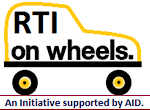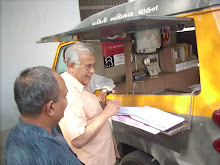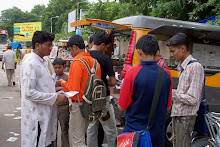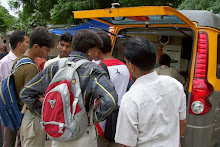Punjab’s abysmal board results have as much to do with ‘grace marks’ as with a crumbling education structure
Tribune India: Chandigadh: Sunday, May 28, 2017.
There is an old saying: if you can’t win the game, change the rules. In India, you may add: if you still fail, blame the game. Last week, when Punjab School Education Board (PSEB) chairman Balbir Singh Dhol (he resigned this week) announced Class XII and X results, he perhaps meant as much. “This is the actual percentage,” he said, pointing to a sharp decline in the pass percentage (from 76.7% last year to 62.4 for Class XII and from 72.2% the previous year to 57.5 for Class X). The reason the board cited was as unconvincing as the crankiness of frequently changing the goalposts with impunity. This eccentric elasticity first gave rise to ‘result moderation’— a euphemism for ‘grace marks’ — and then it sprang back into chest-beating by mostly government-run schools.
Dhol’s giveaway clearly indicates that the board had actually inflated the pass percentages in the last few years by giving grace marks. No prizes for guessing that at least 15-20% students, who would have otherwise failed, had got into the pass category.
The board authorities went one more step ahead in laying bare the bloated figures. They said if no grace marks were given in 2015 and 2016, only 48 to 53% candidates would have cleared Class XII and Class X exams, respectively. The overall pass percentage declared by the board for these years was 68 and 72.25%.
This is the first time that the board abolished the “marks moderation system” (MMP). At a meeting last month, over 30 school boards, including the Central Board of Secondary Education (CBSE), decided not to artificially “spike” marks in the board results this year. Last December, the CBSE had requested the Union HRD ministry to build a consensus among all state boards on withdrawing the MMP. The objective is to check inflated scores in board exam results and a steep spike in cut-off percentages in undergraduate admission courses.
Whatever the board may say, the fault lines in Punjab may lie elsewhere: government schools in rural areas.
Sangrur school stunnedLocated near Dhuri town of Sangrur district on Ludhiana-New Delhi highway, Government Senior Secondary School, Bhasaur, has enough teachers and infrastructure. It has nine teachers on its rolls against the sanctioned 10. It is well-equipped with facilities such as computers and labs.
The school has witnessed a gradual rise in pupil intake and has recorded over 70% success rate. May 22 stunned the school: only one of the total 42 students managed to clear Class X. The teachers are now struggling to convince the parents that the reason behind the dismal performance is not academic, but 'technical.'
“There seems a grave error in checking papers. From our school, only one student has scored 17 marks in science. The rest have marks between 3 and 7. It's impossible that all students get marks in the same bracket. Similarly, in mathematics, most have failed with identical marks. We have decided that our students will file RTI applications to get copies of individual answer sheets,” says school principal Arjinder Pal Singh.
However, father of a failed student, who now wants a school leaving certificate for admission elsewhere, has a different story to tell. “Had they taught seriously, how could have the students failed?” he asks. Gurbhajan Singh, who works in a farm near the school, says everybody wants posted in this school because the school is located on the highway. “But nobody wants to teach.”
No teachers at Tarn Taran
Khem Karan town in Tarn Taran district is close to border with Pakistan. On May 22, the school was jolted by “actual result.” Khemkaran's Government Girls Senior Secondary School is neither located near a highway nor has it enough teachers on its rolls. With over 400 pupils, the school currently has only two teachers against the sanctioned 18. Yet, the school is known for its 100% results. On May 22, just one of 60 students managed to get pass marks in Class X. “There has been a technical mistake as the marks of practical exams are not added. We have approached the PSEB to rectify the mistake,” says school in-charge Kuljit Kaur.
“The government often sends teachers to border schools. They stay only for two-three months and then manage to get a transfer. As per the government policy, a teacher from border areas can't be shifted for three years after posting. But everyone has some political connections,” says Kuljit Kaur.
Khemkaran resident Gurdev Singh says some parents plan to stage a protest against the school. “But, we all know two teachers cannot teach 400 students. The poor parents spend their earn money on private tuitions. No teacher from Amritsar or Tarn Taran would like to stay in border villages,” says Gurdev.
Lost in figuresFigures offer a perspective. The national average of pupil-teacher ratio was recorded at one teacher per 24 students in 2015-16. As per Unified District Information System on Education (U-DISE), the average ratio in Punjab is recorded far better at 16.
Germanjit Singh, state committee member of Democratic Teachers Front (DTF) and a teacher of Physics at Government Senior Secondary, School, Jabbowal in Amritsar district, says most schools are running with 50-60% of the sanctioned staff strength. That staff is burdened with non-teaching works,” says Germanjit.
Some trace the origin of the present crises to 1978, when the state government decided to open primary school in premises separate from high, middle and secondary schools. “Primary schools have one or two teachers. They are poorly administrated,” says Dr Kuldeep Singh, assistant professor, department of education, Punjabi University, Patiala.
“We need a system where a secondary school should act as a fully-fledged administrative centre of schools located in a cluster. Efforts should be made that all schools falling in that cluster should be brought under one roof,” says Dr Kuldeep.














































































